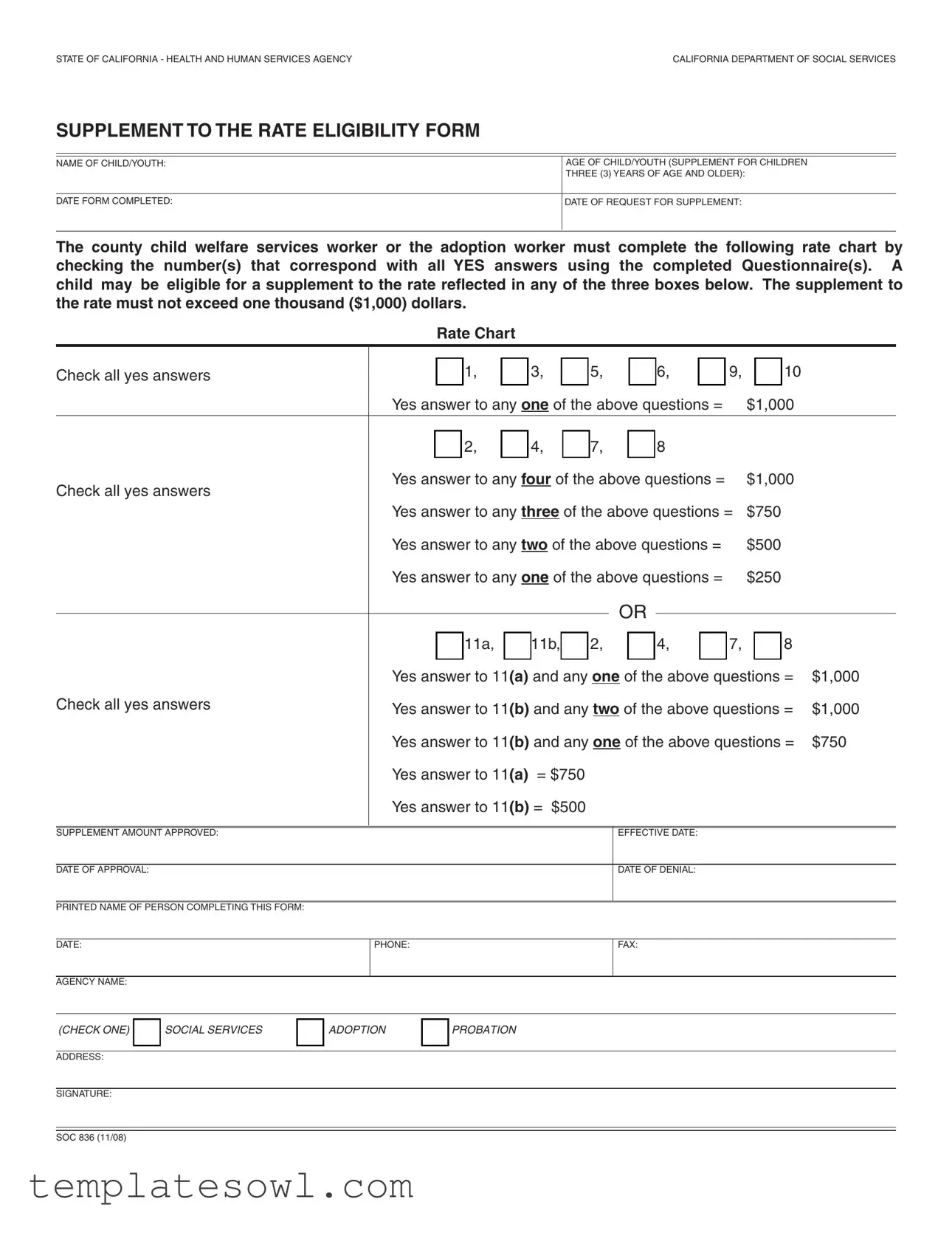What is the purpose of the 836 form?
The 836 form, also known as the Supplement to the Rate Eligibility Form, is used in California to determine if children and youth may qualify for additional financial support based on specific needs or circumstances. This ensures that they receive the necessary assistance for their care and well-being.
Who is required to complete the 836 form?
The 836 form must be completed by the county child welfare services worker or the adoption worker. They gather the required information to evaluate the child's eligibility for a supplemental rate.
What information is needed to fill out the form?
Essential information includes the name and age of the child or youth, the date the form is completed, and the date of the request for the supplement. Additionally, the worker will check the appropriate boxes based on responses to a set of questionnaires.
How is the supplement amount determined?
The supplement amount is based on a rating chart that is answered by checking off the number of “yes” responses. Depending on the combination of those responses, the child may qualify for varying supplement amounts up to $1,000.
What happens if a child answers 'yes' to multiple questions?
The answers to specific questions are assigned points which determine the amount of the supplement. For example, answering ‘yes’ to certain questions may qualify a child for the full $1,000 or a lesser amount based on the number of affirmatives provided.
Are there any limits to the supplement amount?
Yes, the maximum supplement amount cannot exceed $1,000. Furthermore, the amount awarded depends on the specific criteria met through the questions answered.
What information must be provided regarding the approval process?
The form requires the effective date of the supplement, the date of approval, and the date of denial, if applicable. This documentation helps track the process and any decisions made regarding the supplement.
How can I get assistance in filling out the 836 form?
If you need help, it is advisable to contact the agency that is responsible for the child’s care. The assigned caseworker or agency representative should be able to provide guidance and support while completing the form.
What should I do if my supplement request is denied?
If your request is denied, the denial date will be noted on the form. You are encouraged to follow up with your caseworker to understand the reasons for the denial and whether an appeal or resubmission is possible.
Where do I submit the completed 836 form?
The completed form should be submitted to the relevant agency, which can include social services, adoption agencies, or probation departments, depending on the child's circumstances.

